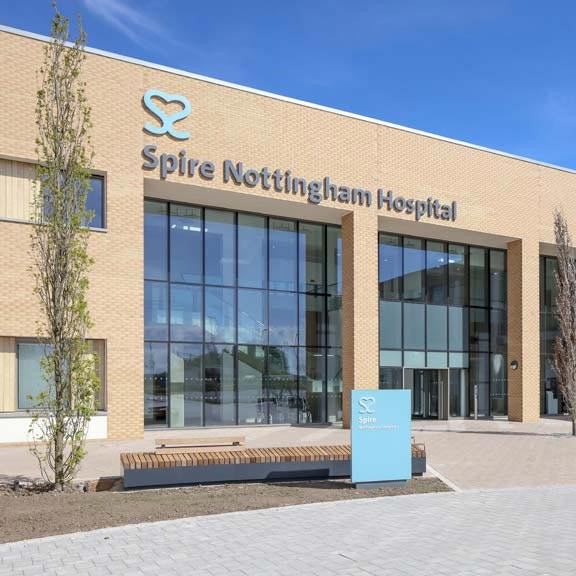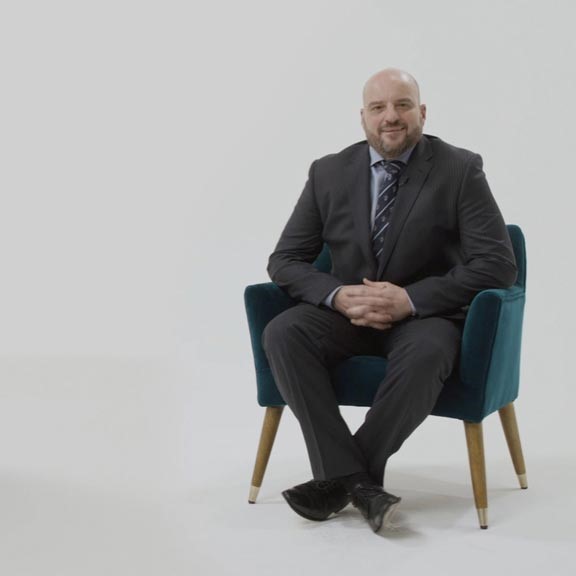Varicose vein treatment
A variety of methods to treat unsightly and painful varicose veins.
We offer the latest techniques to treat varicose veins – swollen, twisted, purple or dark blue veins that are common on legs and feet.
Sometimes also called
- Endothermal ablation
- Ligation and stripping
- Endovenous laser treatment
- Radiofrequency ablation
At a glance
-
Typical hospital stay
0-1 nights -
Procedure duration
45-90 minutes -
Type of anaesthetic
General, spinal, epidural, or local -
Available to self-pay?
Yes -
Covered by health insurance?
Yes
Why Spire?
- Fast access to treatment when you need it
- Consultants who are experts in their field
- Clear, inclusive pricing
- 98% of our patients are likely to recommend us to their family and friends
View this treatment at your local spire Spire Hospital
- Local pricing
- Consultants near you
- Payment options
- Local pricing
- Consultants near you
- Payment options
What is varicose vein treatment?
Treatment for varicose veins involves closing off and destroying or removing varicose veins – swollen, lumpy veins that develop due to weak valves in your blood vessels. As the valves in the veins which normally stop blood flowing backwards in the legs get weaker, the blood starts to accumulate and the veins become lumpy. Varicose veins can be small or large, but normally superficial. Although treatment is not always necessary, they can be painful and lead to complications such as leg ulcers.
Your doctor may suggest varicose vein removal if your legs:
- Ache or are painful
- Develop leg ulcers
- Have varicose eczema – dry, flaky, itchy and discoloured skin over your veins
- Bleed easily when knocked
- Are swollen
You may also want to have them treated because you don’t like how they look.
Treatment will close off your affected vein using surgery or alternative techniques. This will:
- Relieve pain
- Reduce the risk of complications
- Improve circulation
Compression stockings can also help relieve the pain, discomfort and swelling in your legs caused by varicose veins. However, they are not proven to help stop your varicose veins worsening or prevent new varicose veins appearing.
Your consultant will examine your veins and ask about your symptoms. They may also send you for an ultrasound scan to help locate damaged valves.
Before treatment, your doctor may recommend:
- Wearing compression stockings to improve circulation
- Avoiding standing for long periods
- Exercises – such as swimming or walking
- Maintaining a healthy weight
- Putting your feet up when resting
Find your nearest Spire hospital or clinic
Almost all of our hospitals offer private varicose vein treatments. We have dedicated vascular consultants who specialise in these procedures and use many of the latest techniques and innovations. Some varicose vein treatments may also be offered at one of our Spire Healthcare Clinics under a local anaesthetic.

Events
Free mini consultations for Cosmetic surgery
Book a Free mini consultations with our leading Cosmetic experts
Learn more
Free mini consultations for Cosmetic surgery
Book a Free mini consultations with our leading Cosmetic experts
Learn more
Allergic Eye Disease
Join Spire Murrayfield Hospital (Wirral) and Consultant Ophthalmic Surgeon - Tara Lane for an evening of education on Allergic Eye Disease.
Learn more
How varicose vein treatment works
The varicose vein is closed off and destroyed or removed, and your blood flow will naturally re-route through your other healthy veins. Treatment methods include:
Endovenous laser ablation (EVLA)
A laser will be inserted into your varicose vein and heat the vein walls, sealing it off so blood can’t flow through it. This destroys the vein and your body will absorb the dead tissue. You may be able to have this procedure in a treatment room rather than an operating theatre and it can be done under a local or general anaesthetic.
Your consultant will:
- Carry out an ultrasound scan to use as a guide to target the correct veins
- Pass a catheter (thin, plastic tube) up your vein, with the help of a needle and wire
- Pass a laser fibre up the catheter to the highest point of the vein to be heated
- Pull the laser along the length of your vein, completely closing it
- Remove the laser and catheter and put a dressing on the needle puncture
This procedure is minimally invasive and less painful than traditional surgery, you can expect to return to normal activities after one to two days. You may find that you have a tightness in your legs, bruising and pain after your procedure. In most cases, these will disappear after a couple of days, but some patients can find they continue for up to two weeks.
Venefit™ (VNUS Closure)
This procedure uses radiofrequency energy to heat the vein walls, sealing them and destroying the vein. Venefit™ is very similar to EVLA but uses radiofrequency energy instead of a laser. You may be able to have this procedure in a treatment room rather than an operating theatre and it can be done under a local or general anaesthetic
Benefits of this treatment compared to alternatives include a faster procedure and less pain and bruising as it’s minimally invasive. After your Venefit™ treatment, a dressing will be applied over the insertion site, you may have pins and needles in your legs and you might have to wear compression stockings for up to a week.
Varicose vein surgery: Ligation and stripping
This is open surgery and a more invasive procedure. While EVLA and VNUS closure treats varicose veins by closing them, surgery involves tying off the vein and then stripping it out. You will be under general anaesthetic for this.
Your surgeon will:
- Make two incisions (cuts), one at the top of your groin, the other further down your leg
- Tie up and seal the top of the vein near your groin
- Pass a thin, flexible plastic wire into the top of your vein through the groin incision
- Pull the wire out through the incision lower down your leg, stripping out the damaged vein at the same time
- Stitch your wound
The advantage of varicose vein surgery is that your surgeon can fully remove the painful veins, but you will be left with some small scarring.
You can usually go home on the same day as your varicose vein surgery, but you may need to stay overnight, particularly if you had surgery on both of your legs. Your leg will be bandaged after your procedure, you may need to wear compression stockings for a week and you may need to recover for up to three weeks before returning to work.
Your surgeon will explain the pros and cons of each method and which is best for you. This will depend on:
- Vein size and shape
- The extent and severity of your veins
Other alternative treatments for varicose veins include foam sclerotherapy, the injection of foam into veins to scar and seal them closed, and phlebectomy, a technique to cut out the affected veins.
What to expect during varicose vein treatment
Who will be involved?
As well as your chosen surgeon, you may also be seen by an anaesthetist – to administer anaesthetic during the operation.
How to prepare for varicose vein treatment
Your doctor will advise if you need to stop any medication in preparation for your treatment. You may find it helpful to wear loose and comfortable clothing and you should organise for someone to take you home.
If your treatment is being performed under local anaesthetic, you can eat as normal. If your procedure is being performed under general anaesthetic, you’ll need to stop eating six hours before your treatment, but you can drink clear fluids until two hours before.
How long does varicose vein treatment take?
It’s usually under an hour for keyhole procedures and between 60–90 minutes for open surgery.
Anaesthetic choices
Your consultant will advise on what’s best, based on your health and the surgical method used. It will either be:
- A local anaesthetic, when you’re awake but you can’t feel anything in your leg (keyhole techniques)
- A general anaesthetic, when you’re asleep
Pain after varicose vein treatment
There tends to be less pain with keyhole techniques than with open surgery but you’re still likely to feel some discomfort afterwards. Everyone experiences pain differently but you’ll be given painkillers to help you manage this.
Your stay
After your procedure, you’ll be transferred to the recovery area where a nurse will check your wound, pulse and blood pressure. If you are feeling any pain you may be given some painkillers. You’ll usually go home on the same day or the following day. Before you go home, you must be able to have something to eat and drink, walk independently and pass urine.
Q & A
Gary Maytham, Consultant Vascular Surgeon
Talking about varicose veins
View transcript of this video
What are varicose veins?
Most people understand varicose veins to be the large, visible lumpy veins on people’s legs. These are varicose veins, but varicose veins may also be a lot smaller and range from fine thread veins to these large veins.
How do varicose veins develop?
The blood in your legs moves from the feet towards your heart through the veins. In the veins, there are valves that stop the blood running back down, refluxing under the influence of gravity. In people with varicose veins, these valves fail in some of the veins, predominantly the superficial shallow veins in the legs. The blood then moves down these veins and fills the branches which leads these to enlarge and become lumpy and visible.
How does varicose vein treatment work?
Laser treatment for varicose veins is one of the treatments that is delivered inside the vein, or an endovenous treatment. The energy from the laser burns the inside of the vein and closes it, this stops the blood running down the vein because the valves are failed and treats the problem.
How long will my varicose vein treatment last?
A typical procedure lasts anything between 45 minutes and an hour and a half, with the latter being for someone with quite significant varicosities which need to be treated.
How long will I need to recover after treatment?
There’s no prescribed length of time to take off from work following varicose vein treatment. Essentially, people can go back to work once they feel comfortable, in most cases this is two to three days after the procedure, perhaps a bit longer in patients who have an arduous employment.
How successful is varicose vein treatment?
The new techniques for treating varicose veins are very successful. Studies have shown that after five years, 95% of the treated veins are still successfully closed. This however does not mean that people will have no further varicose veins, as people who have varicose veins are more susceptible to having more, even if those have been successfully treated. So the techniques are very successful but unfortunately varicose veins is a disease that can recur with new veins growing.
Recovering from varicose vein treatment
We aim to get you back to everyday life as quickly as possible, although everyone’s different and your treatment and recovery will be personal to you. You can expect to be home the same day or day after your procedure. Once home, you may need to wear compression socks for up to a week, if you had keyhole treatment you may be able to return to normal activities after a week. It can take between two to four weeks for any aching in your legs to stop, if you had varicose vein open surgery you can expect to make a full recovery four weeks after your procedure.
Your lifestyle after treatment
You’ll need to arrange for someone to take you home after your treatment and to stay with you for the first 24 hours. After your treatment, it’s normal to experience:
- Tightness in your legs
- Pain or discomfort
- Bruising
You’ll need to wear compression stockings during the day for around a week, regardless of which type of procedure you have. These will be given to you before you go home, along with details of a six-week follow-up appointment.
You should try and keep your legs higher than your hips when sitting down, this stops blood pooling in your leg and reduces the pressure on your wounds.
You should be back to most normal activities, including work or driving, within a week if you had keyhole techniques.
For open surgery, recovery will take longer and you may want to arrange help with tasks such as shopping and cleaning.
Gentle walking is good for your legs and you should gradually increase physical activities each day, but check with your consultant before doing vigorous exercise, driving or taking a long-haul flight. You may be able to drive a week after your procedure, though it’s advisable to check with your motor insurance company first.
You’ll be able to shower once your wound has been redressed, but you’ll need to make sure your dressing is kept dry. You’ll be able to have a bath once your wound has healed.
Risks and complications of varicose vein treatment
Most people have varicose vein treatment without complications, but all surgery carries some risks. Your consultant will explain them to you before you go ahead.
Varicose vein treatment complications can include:
- Burns to your skin (laser)
- Sensitivity in your thigh (laser)
- Short-term pins and needles (radiofrequency)
- Blood clots in your veins, which can lead to deep vein thrombosis (DVT) and thrombophlebitis (all methods)
- Bleeding (surgery)
- Nerve damage (laser and surgery)
- An allergic reaction to general anaesthetic
- Infection around the wound (all)
- Skin discolouration or reddening (laser)
At Spire Healthcare, your safety is our top priority. We have high standards of quality control, equipment and cleanliness and an ongoing system of review and training for our medical teams.
Treatment and recovery timeline
Here’s a typical recovery timeline for varicose vein surgery:

0-1 days
Leave hospital or clinic
1 week
Stop wearing compression stockings; back to most normal activities for keyhole techniques
2-4 weeks
Aching should stop
4 weeks
Full recovery for open surgery
-
0-1 days
Leave hospital or clinic
-
1 week
Stop wearing compression stockings; back to most normal activities for keyhole techniques
-
2-4 weeks
Aching should stop
-
4 weeks
Full recovery for open surgery
Frequently asked questions
Can my doctor give me medicines to treat my varicose veins?
There are no oral or topical medicines that are proven to treat or improve varicose veins. Alternatively, there are a number of self-care methods you can try at home to relieve pain and prevent your varicose vein symptoms from getting worse.
Am I more likely to develop a DVT if I have varicose veins?
Most people who have varicose veins don't experience complications, however, they can increase your likelihood of developing blood clots in superficial veins if left untreated. This could lead to conditions such as DVT and thrombophlebitis.
My skin is really dry and itchy. What can I do?
Varicose veins can result in varicose eczema, as fluid leaks into the surrounding tissue and the immune system reacts. For most people, emollients (moisturisers) and topical corticosteroid ointments are enough to help treat the skin.
Which is the best treatment for varicose veins?
There are a number of treatment options for varicose veins. Your doctor will assess your condition and determine which treatment is best for you, depending on the size, shape and severity of your varicose veins.
How can I treat varicose veins at home?
There are a number of self-care methods you can try at home to relieve pain and prevent your varicose veins symptoms from getting worse, including exercising, losing weight, wearing loose clothing, elevating your legs and avoiding sitting or standing for long periods.
Is walking good for varicose veins?
Some people find that exercise, including walking, is useful in reducing pain and stopping varicose veins from getting worse. Also, if you’ve had treatment for your varicose veins, walking is a great way to keep your blood flowing through your legs and reduce your risk of a DVT.
Can you massage varicose veins?
Some people may find that massages can help reduce swelling and discomfort in the legs, but it won’t help varicose veins go away.
What to avoid with varicose veins?
There are some things you should avoid that will worsen your condition, including sitting or standing in the same position for too long, a low-fibre and high-salt diet, high heels and tight hosiery.
What happens if you don't treat varicose veins?
Most people who have varicose veins don't experience problems, however, they can result in a number of complications if left untreated, including bleeding, blood clots, chronic venous insufficiency, eczema, lipodermatosclerosis and leg ulcers.
The treatment described on this page may be adapted to meet your individual needs, so it's important to follow your healthcare professional's advice and raise any questions that you may have with them.

